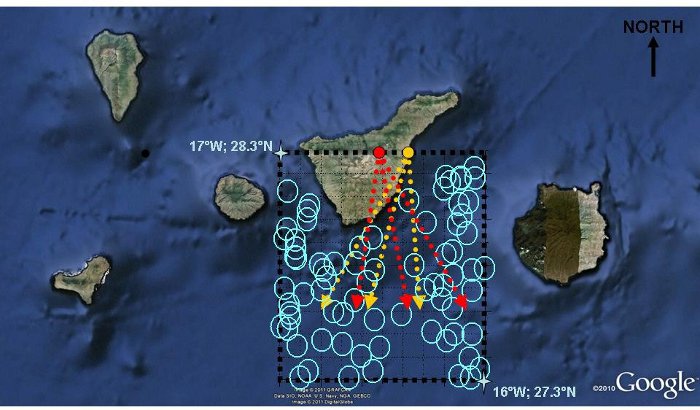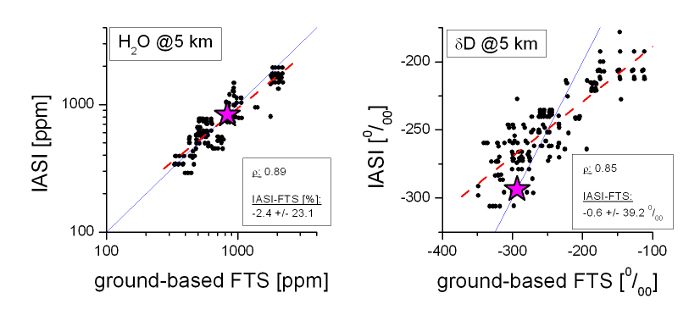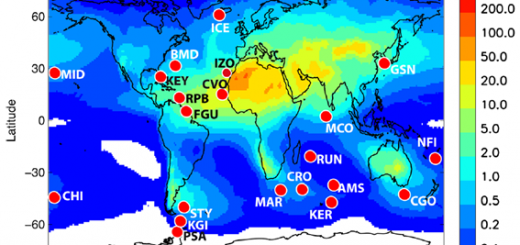New space-based observations of tropospheric water vapour isotopologues
A new retrieval method for observing tropospheric water vapour isotopologues from space by the instrument IASI (Infrared Atmospheric Sounding Interferometer) aboard EUMETSAT’s polar orbiter METOP is presented (link to the paper, http://www.atmos-chem-phys-discuss.net/11/16107/2011). The study has been performed in the framework of the project MUSICA (MUlti-platform remote Sensing of Isotopologues for investigating the Cycle of Atmospheric water) which is jointly addressed by a German-Spanish team consisting of IARC scientists and scientists of Germany’s Karlsruhe Institute of Technology (KIT). For more information about MUSICA please refer to the webpage: www.imk-asf.kit.edu/english/musica
Measurements of δD – a normalized expression for the ratio between two water isotopologues: HD16O/H216O – offer interesting opportunities for investigating the Earth’s climate system but they are not trivial. Even today research in this field is widely limited by the lack of observational data. In this context estimating δD from IASI spectra is very promising since this instrument offers high temporal and spatial resolution and its operation is guaranteed between 2006 and 2020 on a series of three METOP satellites.
The new space-based observations of H2O and δD are validated by a comparison to a large number of coincident radiosonde in-situ and ground-based FTS (Fourier Transform Spectrometer) remote sensing measurements. Figure 1 shows the validation area south of Tenerife in the northern subtropical Atlantic. Figure 2 depicts the correlations between middle tropospheric H2O and δD obtained by IASI and by the Izaña ground-based FTS system on Tenerife during IASI overpasses, respectively. It is found that both data sets are rather consistent. There are no significant systematic differences between the IASI and the FTS data. These results allow for combining both remote sensing techniques. Such combination would take benefit from both the long-term characteristics of the historic ground-based FTS observations (FTS activities date back to the 1990s at about 15 globally distributed stations) and the wide geographical coverage of the space-based IASI observations.

Figure 1: The area south of the Island of Tenerife that has been selected for the validation exercise. The cyan circles depict the individual IASI measurement pixels used in the study. The red arrows indicate the airmass detected by Izaña’s ground-based FTS system and the yellow arrows the airmass typically detected by the Viasala RS92 during the IASI morning overpasses.

Figure 2: Correlation plots between middle tropospheric H2O and δD obtained by IASI and Izaña’s ground-based FTS system, respectively. The magenta star indicates the applied a priori value.







